
This morning, Seoul is grey and this serious pollution reminds me of Mexico City, where I once woke up with swollen eyes after the first night. On this Day 2 in Korea, from the 22nd floor of my room in Namdaemun, I can already grasp a lot in one glance: contemporary skyscrapers, but also pagodas, markets, mountains, walking crowds, lines of cars, blinking public advertisements, and the Korean alphabet everywhere. With all written messages totally opaque for me, it will like to diving into Seoul’s fog! I have always been interested in the way communication dysfunctions between people who belong to foreign cultures. It was the topic of my very first research project years ago, and I have always tried to analyze the pragmatic strategies to overcome such situations. After a year of fieldwork investigation, together with sociolinguist Christian Bachmann, I published “A South Yemenite in a French Post-Office”, in Etudes de Linguistique Appliquée, in which we unveiled the creative tools forged by a group of South Yemenite geologists upon their arrival in a french city. This morning, I also think of Roland Barthes’s L’empire des signes, a beautiful book about Japan, in which his own maps played the role of a real alternative to face the challenges of the situation.
http://www.seuil.com/livre-9782757806456.htm
I find it impressive that the travelling Rothko exhibition from the National Gallery in Washington, DC. is now available to the Seoul community. Last Fall, these paintings drew crowds in The Hague at the Gemeentemuseum and the presence of the Mondrians nearby, the minimalism of the building (built in the nineteen thirties by Dutch architect H.P. Berlage) offered an ideal setting. I am eager to discover how the Korean public will react to them. A whole team from the French Institute in Seoul as well as my new friend Soo-Bok are joining me for the event and we’re travelling together to the Hangaram Art Center. It is located an hour south of the city center, on the first floor of a big mall -the Seoul Arts Center with the Design Museum, a restaurant and much more on the ground floor. I am not used to seeing art in shopping malls, but why not? A talk had been planned for me at 11 am in the frame of the exhibition, but after the appointment had been made by the French Institute, Ms Keon Hee Kim, (the president of Covana who is responsible for this show) did not return phone calls, my publisher disappeared and the book vanished. In these conditions, should I cancel everything? I am really puzzled, the only thing I have from the French Institute is a business card.
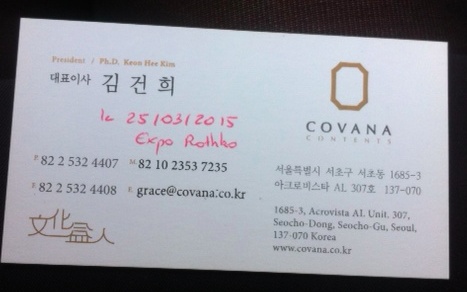

At 11 am, there are about a hundred of people waiting in line, in a red corridor; we are greeted by the assistant to the president, I feel somewhat uncomfortable, and I decide not to give the planed lecture in the auditorium but to say a few words, in a conversation with Soo-Bok in the galleries, in front of the works, in French, while an interpreter is translating into Korean. Only after that, am I able to look at the show. At first, I have some curatorial critiques about the chronology on the first period, about the color of the walls, about the terms “Resurrection” and “Mystical” to describe the Rothko Chapel (placed at the center of the show). But soon, many very weird elements grab my attention: Why does the free booklet of the show draw a parallel between Mark Rothko and Steve Jobs ? What use are those grey pillows on the floor in front of some paintings, as if for prayers? Why a “PhotoZone” with a life-size Rothko portrait, so that people can be photographed next to him? Why a whole room with hnndreds of people’s little handwritten notes to the artist, as if for a cult? Why those reproductions of his paintings on milk cartons to promote the show through blunt publicity? Why those videos on Rothko’s auction sales, when the artist so forcefully fought against commodification? Why turning the artist into a composite of Bouddha, Jesus, a Messiah and Steve Jobs? This is shocking, and even the title of the Korean Times about the show “Painter tried to heal wounds of people” seems to have been affected by a similar distorsion.
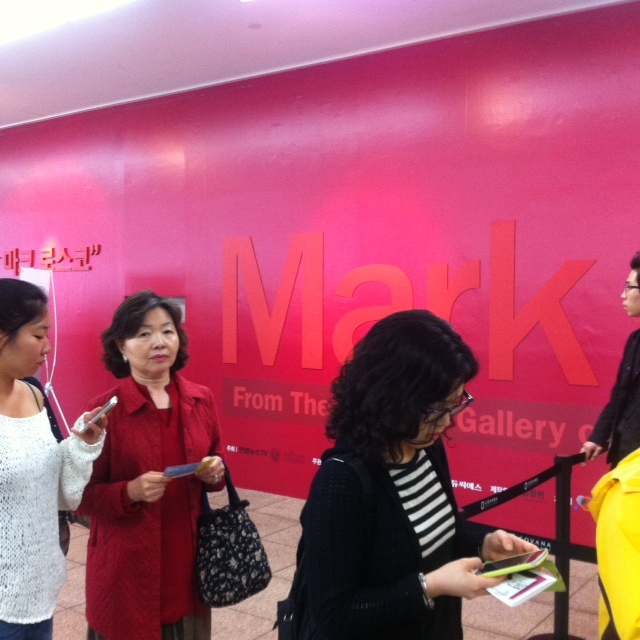
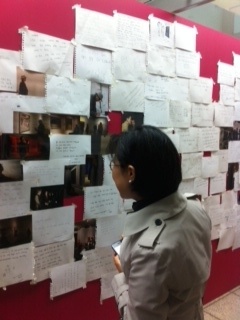

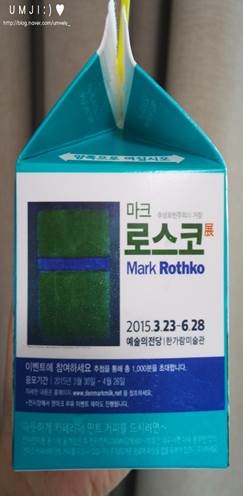
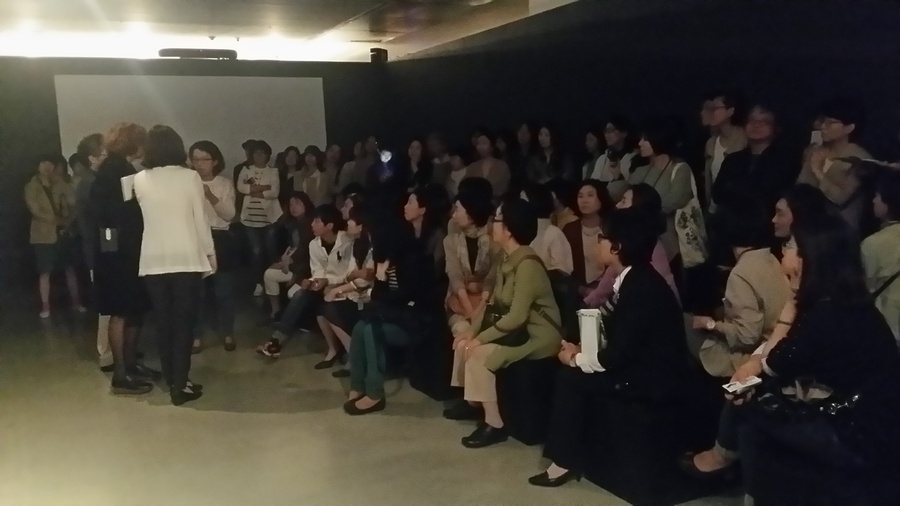
This is becoming more and more puzzling. How to apprehend the goals, the power games, the interests at stake here with Covana? I will need some more hours to clarify it. Let’s just remember the time when Rothko was commissioned the Seagram Murals for the Four Seasons restaurant on Park Avenue in 1958. After accepting the commission and producing his work for one year, he decided to reject this contract. I became convinced that this rejection, in September 1959, was neither a swift gesture nor the superficial endeavour on the part of a “difficult man”, as he was sometimes coined in the press. In fact, I was able to trace some fine indicators in Rothko’s behaviors and texts since his text The Artist’s Reality (written in 1940, published in 2005), as well as in his rebellious activities against US institutions, indicating a total coherence in this move: on the artist’s part, the rejection of the Seagram contract meant first and foremost the rejection of a certain type of alliance, that with the capitalist values of US society of the time. In this respect, what I just saw in the Seoul show seems to go into a totally opposite direction! But very soon, at 4 pm, in the Samsung Library, Jang-Gi-Wo Memorial Hall, at Yonsei University, I’ll be able to develop my own perspective and the Seoul fog will somewhat start to dissolve.
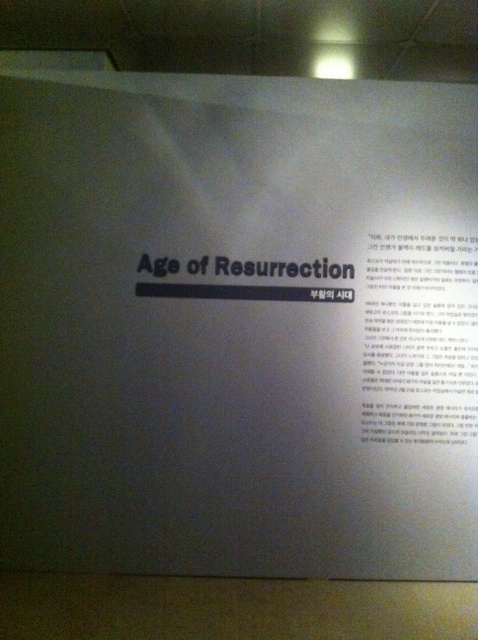


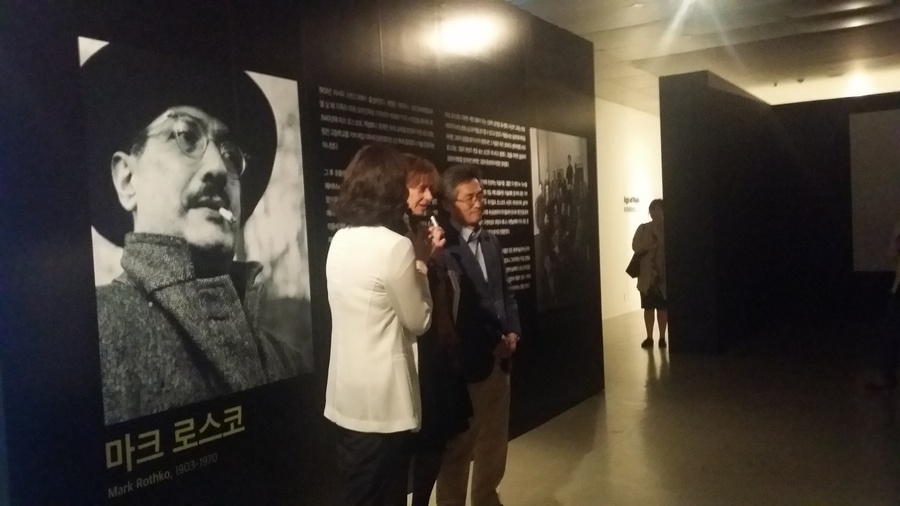
par Annie Cohen-Solal



